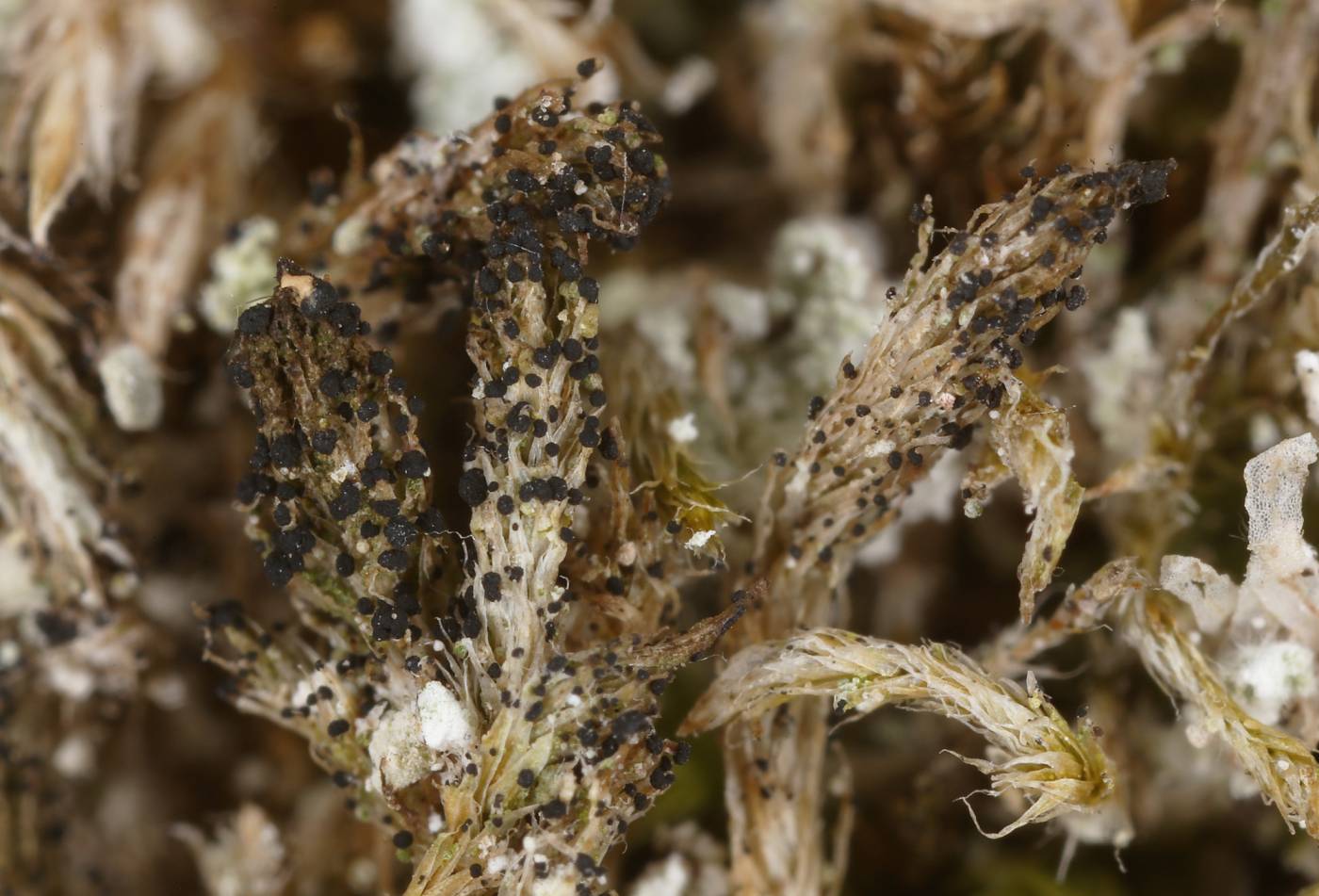An inconspicuous, currently widely defined species, previously included in the genus Arthonia. Currently, the species name lapidicola is applied to this taxon as an older name having a nomenclatural priority (e.g., Cannon et al. 2020). Preliminary phylogenetic analyses and comments by specialists in literature suggest that the genus consists of various taxa (e.g., Frisch et al. 2014). Thus, because changes in nomenclature might be expected in the future, the established name B. muscigenum is maintained in this atlas.
Bryostigma muscigenum is characterized by an inconspicuous thallus with a chlorococcoid photobiont and minute black apothecia similar to the genus Micarea. Their hypothecium is dark brown in cross section (K+ olive) and the paraphysoids are not erect in the upper part of the hymenium but are periclinally elongated (horizonally oriented). Asci are wide and of the Arthonia type. Spores are 1-septate, halonate, hyaline and with one narrower end. It is difficult to distinguish from Arthonia apatetica (= A. exilis s. l.) which forms similar paraphysoids. The latter species is primarily epiphytic and not well defined. It is supposed to have larger apothecia and ascospores and less coloured or even pale hypothecium. Saxicolous species of B. muscigenum may be confused with A. fusca which has larger apothecia and ascospores, more conspicuously coloured hypothecium and erect ends of paraphysoids (Cannon et al. 2020).
Bryostigma muscigenum is a pioneer species on various organic and inorganic substrates, often on shaded microstands in various types of natural and anthropogenic ecosystems. Most commonly, it is found in forest communities. It grows on acidic, but also on more nutrient-rich bark of deciduous and coniferous trees, often on young trunks, shrubs and twigs. It is also common on epiphytic and saxicolous bryophytes, dying lichens, decaying wood, needles, exposed roots, plant debris, siliceous or slightly acidic rocks from lowlands to mountains. In Europe, the species is widely distributed in the temperate sub-Atlantic to sub-Mediterranean regions. In the Czech Republic, it has only been recognized since the change of the millennium (Palice 1999). Currently, it is known from tens of localities in forest areas. It is apparently a more common and more widely distributed but easily overlooked.
Literature: Palice Z. (1999): New and noteworthy records of lichens in the Czech Republic. – Preslia 71: 289–336. Frisch A., Thor G., Ertz D. & Grube M. (2014). The Arthonialean challenge: restructuring Arthoniaceae. – Taxon 63: 727–744. Cannon P. et al. (2020): Arthoniales: Arthoniaceae, including the genera Arthonia, Arthothelium, Briancoppinsia, Bryostigma, Coniocarpon, Diarthonis, Inoderma, Naevia, Pachnolepia, Reichlingia, Snippocia, Sporodophoron, Synarthonia and Tylophoron. – Revisions of British and Irish Lichens 1: 3–48.
taxonomic classification:Ascomycota → Arthoniomycetes → Arthoniales → incertae sedis Arthoniales → Bryostigma
most frequented synonyms:Arthonia muscigenaRed List (Liška & Palice 2010):NT – near threatened
Red List (Malíček 2023):DD – data deficient
Occurrence in the Czech Republic
All records: 51, confirmed 49. One click on a selected square displays particular record(s), including their source(s).

